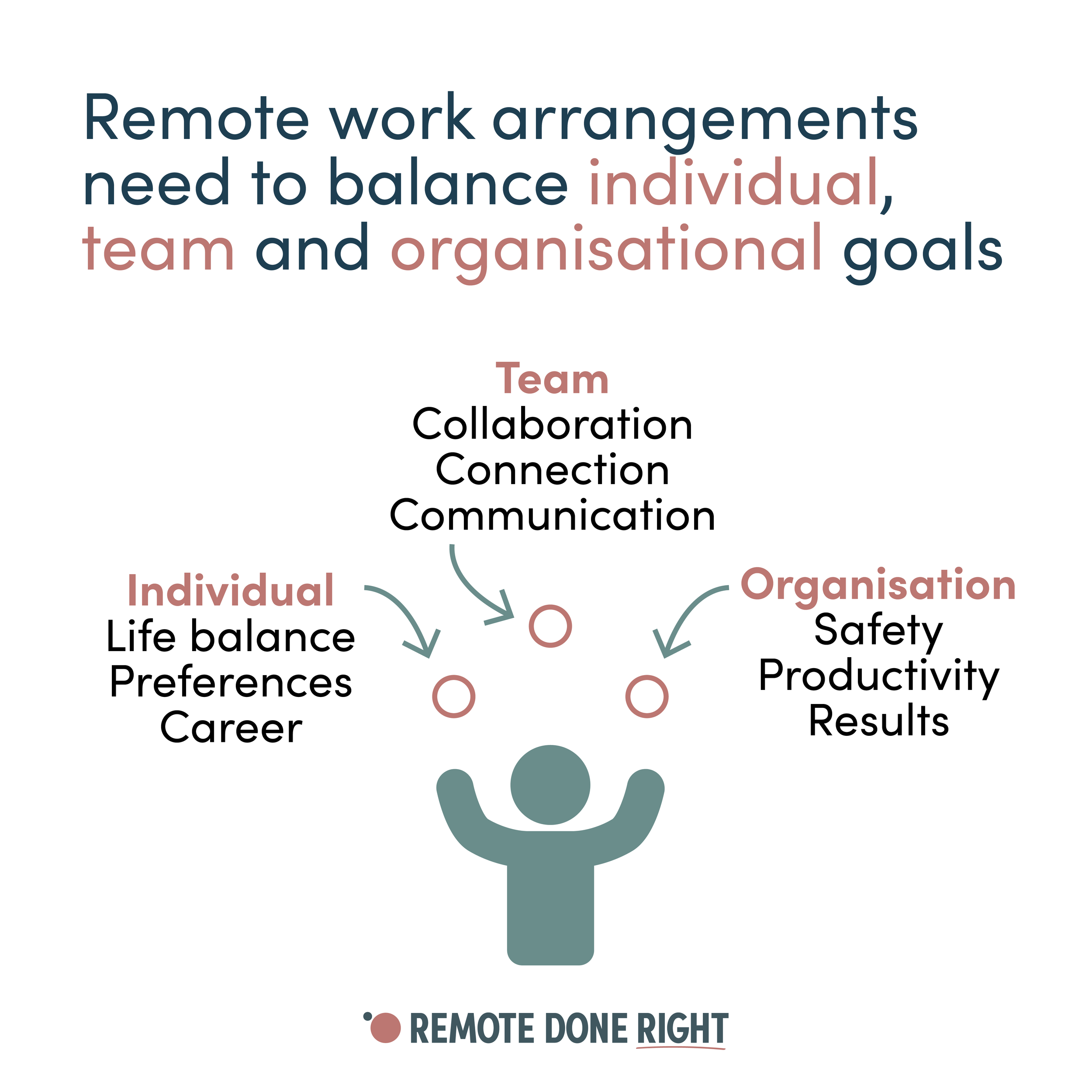Create the perfect remote work plan: a leader's guide.
Teams need to collaborate and compromise on remote work arrangements to come up with a plan that works for everyone.
Stop wondering what your team is doing and start building a remote leadership system that works. Download our free checklist to get started.
Why it matters
Remote work is no longer a temporary solution. Without a thoughtful operations plan, distributed teams can quickly become disjointed, leading to miscommunication, unmet deadlines, and ultimately, dissatisfied employees. Effective remote work planning isn't just a logistical necessity; it's a strategic imperative that ensures the work gets done and people remain happy and productive.
Take action
Define individual requirements
Firstly, take time to identify your remote team’s work needs and preferences. You can do this by conducting one-on-ones or sending an email survey to your team. Questions to ask include:
What are your preferred working hours?
Do you have any specific needs or constraints when working remotely?
How many days a week would you prefer to work remotely?
Are there any tasks or meetings you feel need to be done in the office?
What tools or resources do you need to be productive while working remotely?
Do you have an appropriate home office setup?
Do their roles require some in-office presence, or can they be fully remote?
Define team requirements
Gather as a group to discuss the type of work your team does and how everyone prefers to work so you can identify patterns and themes across the team. Questions to ask include:
What are the tasks that we need to do in the office?
Are there core hours when everyone needs to be available?
Do we need focus time, where we try not to contact each other except in emergencies?
How will we communicate with each other, what channels will we use?
Do your team need training to optimise how they work in a distributed team?
Evaluate organisation requirements
Review the remote work policies of your organisation. Questions to ask include:
What are the company policies on remote work?
Are there specific security or compliance issues we need to consider?
How will performance and productivity be measured for remote workers?
What support and resources are available?
Are there any specific business needs that require in-office presence?
Draft a flexible plan
Prepare a plan for your team that takes into account the individual, team and organisation requirements.
Determine the appropriate mix of work arrangements for your team whether fully remote, hybrid or fully in the office
Identify anchor days, where the team will be together in the office.
Build in flexibility, a plan should take into account that arrangements may flex and change from week to week as things come up in people’s lives.
Specify guidelines for how the team will communicate
Communicate with stakeholders
Brief your manager to discuss benefits and potential challenges. Get feedback on the plan from the team to make sure everyone feels heard and that the plan addresses their concerns and requirements.
Finalise and implement
Incorporate feedback into your final plan. Document the plan fully and share with your staff. Include expectations, communication methods and any tools or resources available to support remote work.
Monitor and adjust
Finally, review the plan regularly by checking in with your leader and team to identify and address concerns quickly.
Join our community
Sign up to our newsletter and join our community of people committed to making remote work fair and productive.

